Only stable chemical waste, correctly packaged and labelled, will be accepted at the waste collection point. Respect the following rules for waste disposal:
- Always prefer storage in the original container. If the container is in good condition (label legible, undamaged cap, etc.), it can be brought to the waste collection point as it is (as illustrated in the séfy newsletter n°23 for pyrophorics).
- All waste must be stable. Unstable waste must be neutralized or quenched in the room where it was produced.
- Never mix incompatible waste . Sort waste according to the physical-chemical properties.
- The waste decision tree is used as an aid to sort the different kinds of waste. It also provides the waste description and right OMoD code (legal obligation) to report on the waste label.
- Waste containers must be labelled in a clear and readable manner.
- Special waste must be eliminated at the latest 2 months after its production (first addition to the recipient) or when the container is filled at 80%. It is then brought to the dedicated collection room.
- Separate solids from liquids.
- Separate soft/blunt solids from sharps and blades.
- It is forbidden to reuse containers.
- Only containers provided by the stores are accepted for waste collection.
- Containers must be chemically and mechanically resistant. The size must be adapted to the use (waste has to be disposed of every 2 months).
- It is forbidden to use food containers.
Distinction between domestic waste without contaminated items (blue bag), rigid containers for sharp/pointed items (yellow container) and chemically contaminated/toxic waste (grey bag).
Solid waste
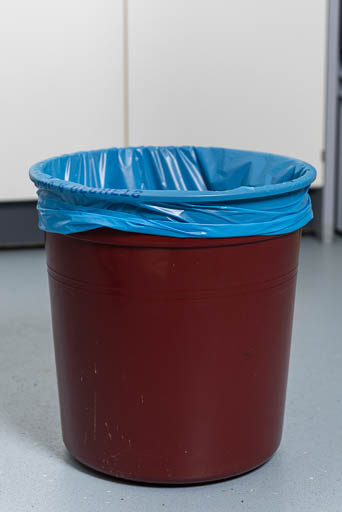 | 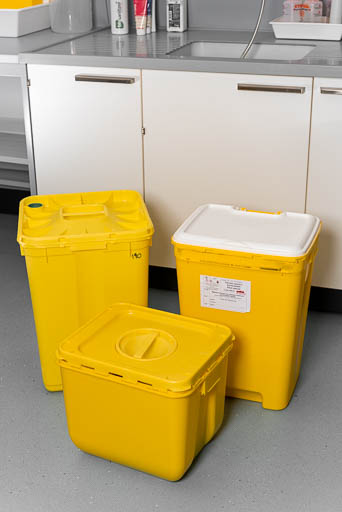 | 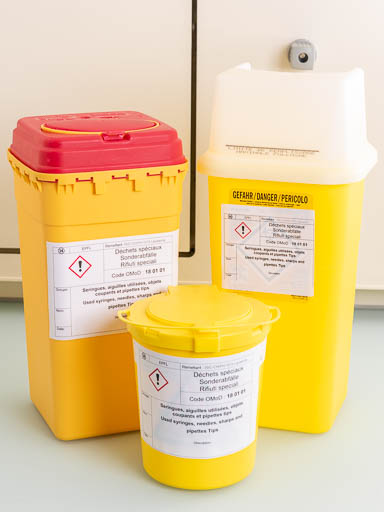 | 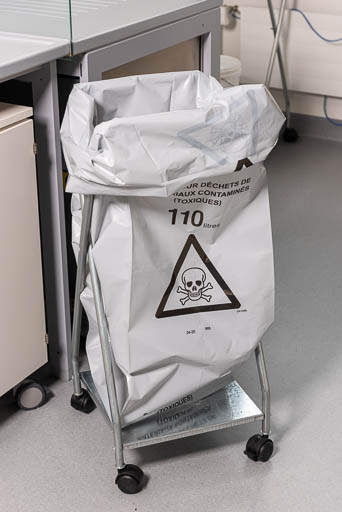 |
| Domestic waste (not contaminated) | Broken glass and pointy objects | Needles and scalpel blades | Contaminated “soft” objects |
Liquid waste
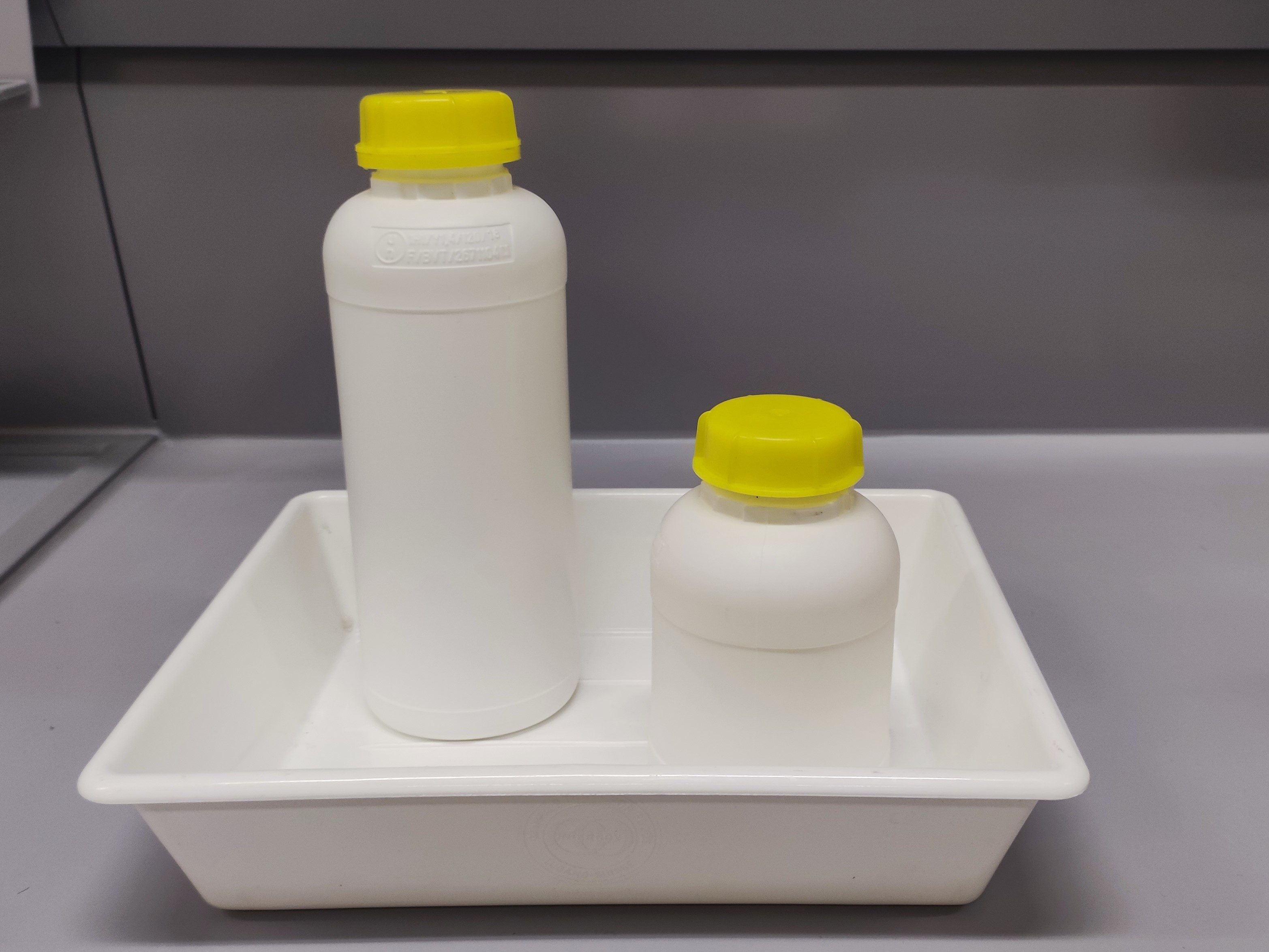 | 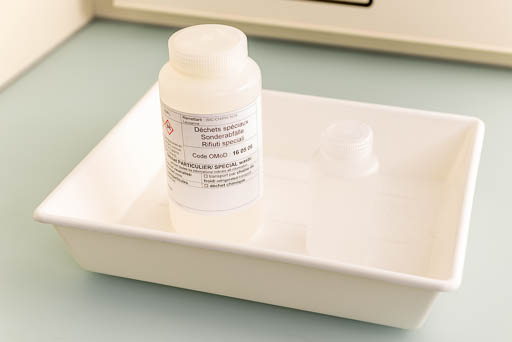 | 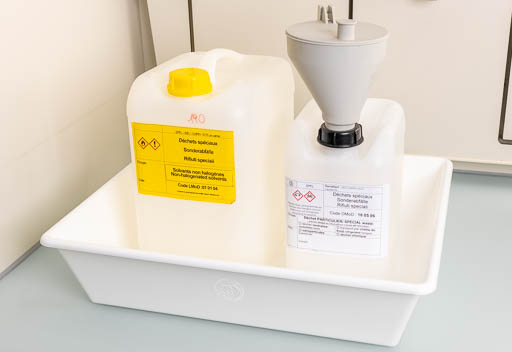 |
| Solvents, acidic or basic aqueous waste | Autoclavable bottles | Solvents, acidic or basic aqueous waste |
- Replace the recipient when it is 80% full to avoid splashes, spills, and overpressure.
- The maximum volume of the recipients for flammable and all health hazardous liquids is 5 litres.
- Unless stated otherwise, liquid waste is collected in HDPE (high density polyethylene) containers closed with a safety cap (equipped with a pressure relief valve)
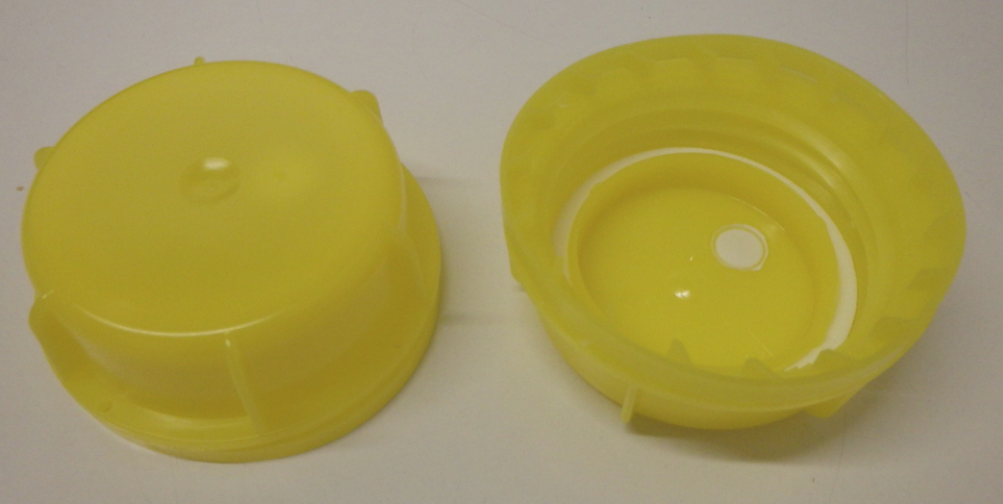
It is forbidden to use glass containers to collect waste. A chemical in its original glass container can be disposed of as it is (as illustrated in the séfy newsletter n°23 for pyrophorics).